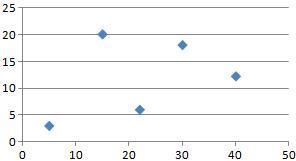
Mathematics, 26.03.2020 22:41 82coogs
1. The United States Department of Agriculture tracks food availability in the country. In general the amount of chicken available in the U. S. has been increasing steadily. In the year 2000, there was 54.2 pounds of chicken available per person, and in 2015 there was 62.6 pounds of chicken available per person. At the same time, the availability of red meat in the U. S. has been steadily decreasing. In 2000, there
was 113.7 pounds of red meat available, and in 2015 there was 98.6 pounds of red meat available per person. Assuming these trends continue, and assuming that a linear function can effectively model these trends, predict the year in which chicken availability surpasses red meat availability.

Answers: 1
Another question on Mathematics

Mathematics, 21.06.2019 13:30
What is the vertical asymptotes of the function f(x)=x-2/x*2-3x-4
Answers: 1

Mathematics, 21.06.2019 14:30
Atriangular bandana has an area of 46 square inches. the height of the triangle is 5 3 4 inches. enter and solve an equation to find the length of the base of the triangle. use b to represent the length of the base.
Answers: 2

Mathematics, 21.06.2019 15:50
Do a swot analysis for the business idea you chose in question 2 above. describe at least 2 strengths, 2 weaknesses, 2 opportunities, and 2 threats for that company idea. (1-8 sentences. 4.0 points)
Answers: 1

Mathematics, 21.06.2019 17:00
In tossing one coin 10 times, what are your chances for tossing a head? a tail? 2. in tossing one coin 100 times, what are your chances for tossing a head? a tail? 3. in tossing one coin 200 times, what are your chances for tossing a head? a tail? deviation = ((absolute value of the difference between expected heads and observed heads) + (absolute value of the difference between expected tails and observed tails)) divided by total number of tosses. this value should always be positive. 4. what is the deviation for 10 tosses? 5. what is the deviation for the 100 tosses? 6. what is the deviation for 200 tosses? 7. how does increasing the total number of coin tosses from 10 to 100 affect the deviation? 8. how does increasing the total number of tosses from 100 to 200 affect the deviation? 9. what two important probability principles were established in this exercise? 10. the percent of occurrence is the obtained results divided by the total tosses and multiplied by 100%. toss the coins 100 times and record your results. calculate the percent occurrence for each combination. percent head-head occurrence: percent tail-tail occurrence: percent head-tail occurrence:
Answers: 3
You know the right answer?
1. The United States Department of Agriculture tracks food availability in the country. In general t...
Questions

Mathematics, 26.03.2021 01:40




Mathematics, 26.03.2021 01:40



Mathematics, 26.03.2021 01:40


English, 26.03.2021 01:40


Mathematics, 26.03.2021 01:40

Social Studies, 26.03.2021 01:40

History, 26.03.2021 01:40

History, 26.03.2021 01:40

English, 26.03.2021 01:40

Mathematics, 26.03.2021 01:40


Arts, 26.03.2021 01:40

Mathematics, 26.03.2021 01:40




